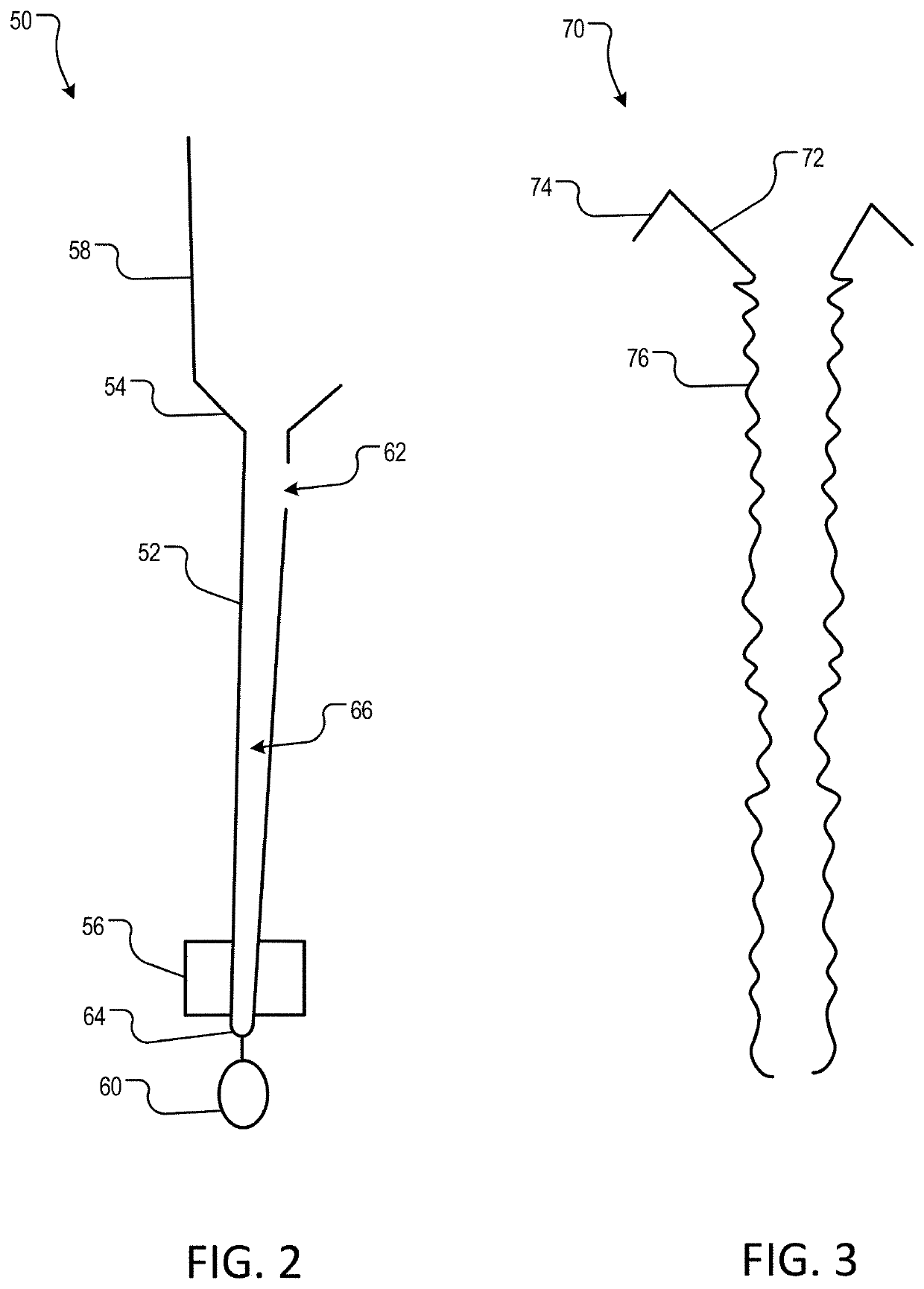Methods and devices for gastricintestinal tract bypass
- Summary
- Abstract
- Description
- Claims
- Application Information
AI Technical Summary
Benefits of technology
Problems solved by technology
Method used
Image
Examples
Embodiment Construction
[0034]This document relates to devices and methods for the medical treatment of conditions such as obesity and metabolic diseases. For example, this document provides methods and devices for bypassing portions of the GI tract to reduce nutritional update, decrease weight, and / or improve diabetes control.
[0035]Referring to FIG. 1, a digestive tract 10 of a human can include an esophagus 12, a stomach 14, and a small intestine 16. The esophagus 12 connects the mouth to the stomach 14 and passes food to the stomach 14. The stomach 14 secretes digestive enzymes and gastric acid to aid in food digestion. The small intestine 16 is the organ where most of the absorption of nutrients and minerals from food takes place. The small intestine 16 includes a duodenum 18, a jejunum 24, and an ileum (not shown). A pyloric sphincter 20 controls a passage for movement 22 of partially digested food from the stomach 14 into the duodenum 18, which is about 25-38 cm long. Food then passes to the jejunum ...
PUM
 Login to View More
Login to View More Abstract
Description
Claims
Application Information
 Login to View More
Login to View More - R&D
- Intellectual Property
- Life Sciences
- Materials
- Tech Scout
- Unparalleled Data Quality
- Higher Quality Content
- 60% Fewer Hallucinations
Browse by: Latest US Patents, China's latest patents, Technical Efficacy Thesaurus, Application Domain, Technology Topic, Popular Technical Reports.
© 2025 PatSnap. All rights reserved.Legal|Privacy policy|Modern Slavery Act Transparency Statement|Sitemap|About US| Contact US: help@patsnap.com



